
- Physics Notes for UPSC IAS Prelims (Part I)
- Physics - Home
- Physics - Force and Pressure
- Physics - Friction
- Physics - Some Natural Phenomena
- Physics - Motion
- Physics - Force and Laws of Motion
- Physics - Gravitation
- Physics - Mass and Weight
- Physics - Work and Energy
- Physics - Light
- Physics - Reflection and Refraction
- Images Formed by Spherical Mirrors
- Physics - Refraction of Light
- Physics - Spherical Lenses
- The Human Eye & Colorful World
- Refraction of Light Through a Prism
- Physics - Electricity
- Chemical Effects of Electric Current
- Magnetic Effects of Electric Current
- Physics - Electric Motor
- Physics - Source of Energy
- Physics - Sound Part I
- Physics - Sound Part II
- Speed of Sound in Different Media
- Physics - The Solar System
- Physics - Stars and The Solar System
Images Formed by Spherical Mirrors
Introduction
Drawing the ray diagrams is an ideal way to illustrate the formation of images by spherical mirrors.
The intersection of at least two reflected rays give the correct position of image of the point object.
The following table illustrates the image formed by a concave mirror for different positions of the given object −
| Position of Object | Position of Image | Size of Image | Nature of Image | Image |
|---|---|---|---|---|
| At infinity | At the focus F | Highly diminished, pointsized | Real and inverted | 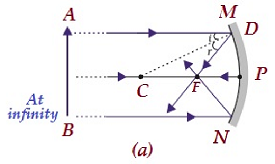 |
| Beyond C | B/w F and C | Diminished | Real and inverted | 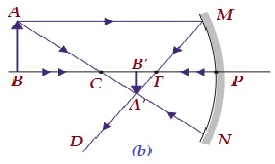 |
| At C | At C | Same size | Real and inverted | 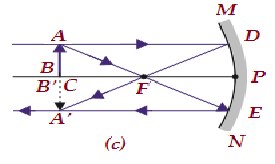 |
| B/w C and F | Beyond C | Enlarged | Real and inverted | 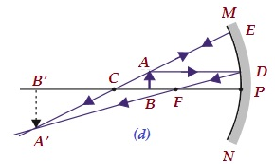 |
| At F | At infinity | Highly enlarge | Real and inverted | 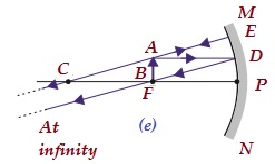 |
| B/w P and F | Behind the mirror | Enlarged | Virtual and erect | 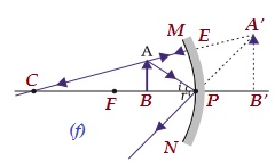 |
Uses of Concave Mirror
In order to get powerful parallel beams of light, concave mirrors are universally used in torches, search-lights, and vehicles headlights.
Concave mirror is also used in barber’s saloon, as it gives larger view.
Concave mirror is also used by dentists, to see the large images of the teeth of patients.
Large concave mirrors are used to concentrate sunlight to produce maximum heat in the solar furnaces.
Image formation by a Convex Mirror
The following table illustrates the image formed by a concave mirror for different positions of the given object −
| Position of Object | Position of Image | Size of Image | Nature of Image | Image |
|---|---|---|---|---|
| At infinity | At the focus F, behind the mirror | Highly diminishe d, point sized | Virtual and erect | 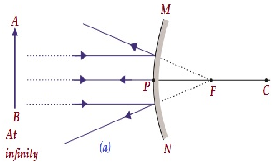 |
| B/w infinity and pole of the mirror | B/w P and F, behind the mirror | Diminishe d | Virtual and erect | 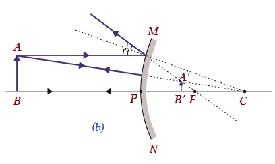 |
Uses of Convex Mirrors
In all vehicles, convex mirrors are universally used as rear-view (wing) mirrors.
In vehicles, convex mirrors are preferred, as they give though diminished, but an erect image.
Mirror Formula
The formula is expressed as:
Mirror formula expresses the relationships among the object-distance (i.e. u), image-distance (i.e. v), and focal length (i.e. f) of a spherical mirror.
$$\frac{1}{v} + \frac{1}{u} = \frac{1}{f}$$